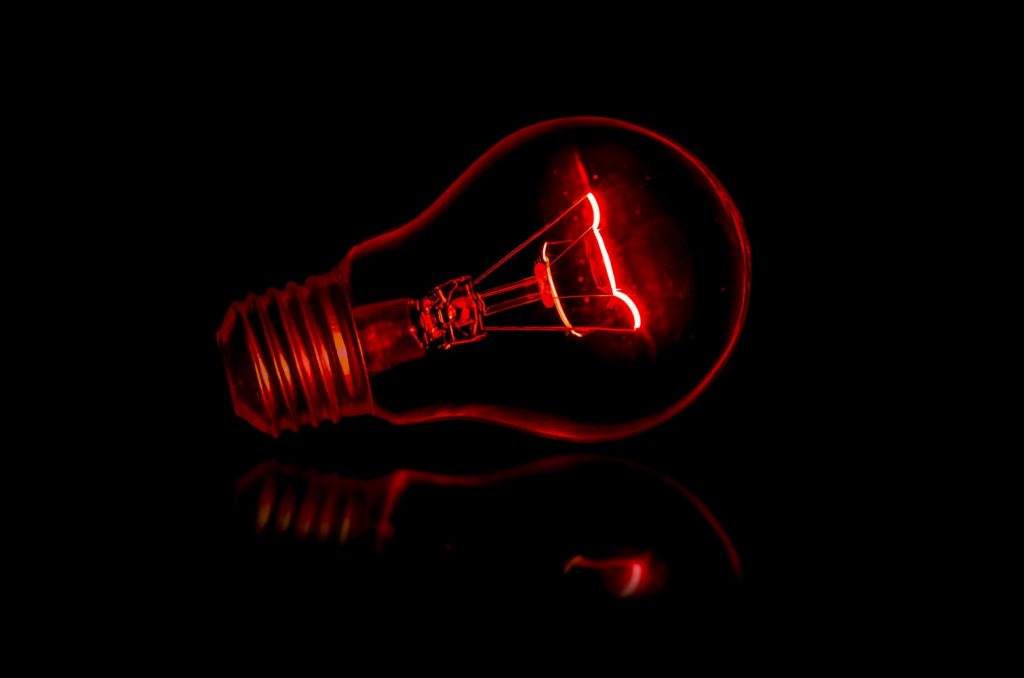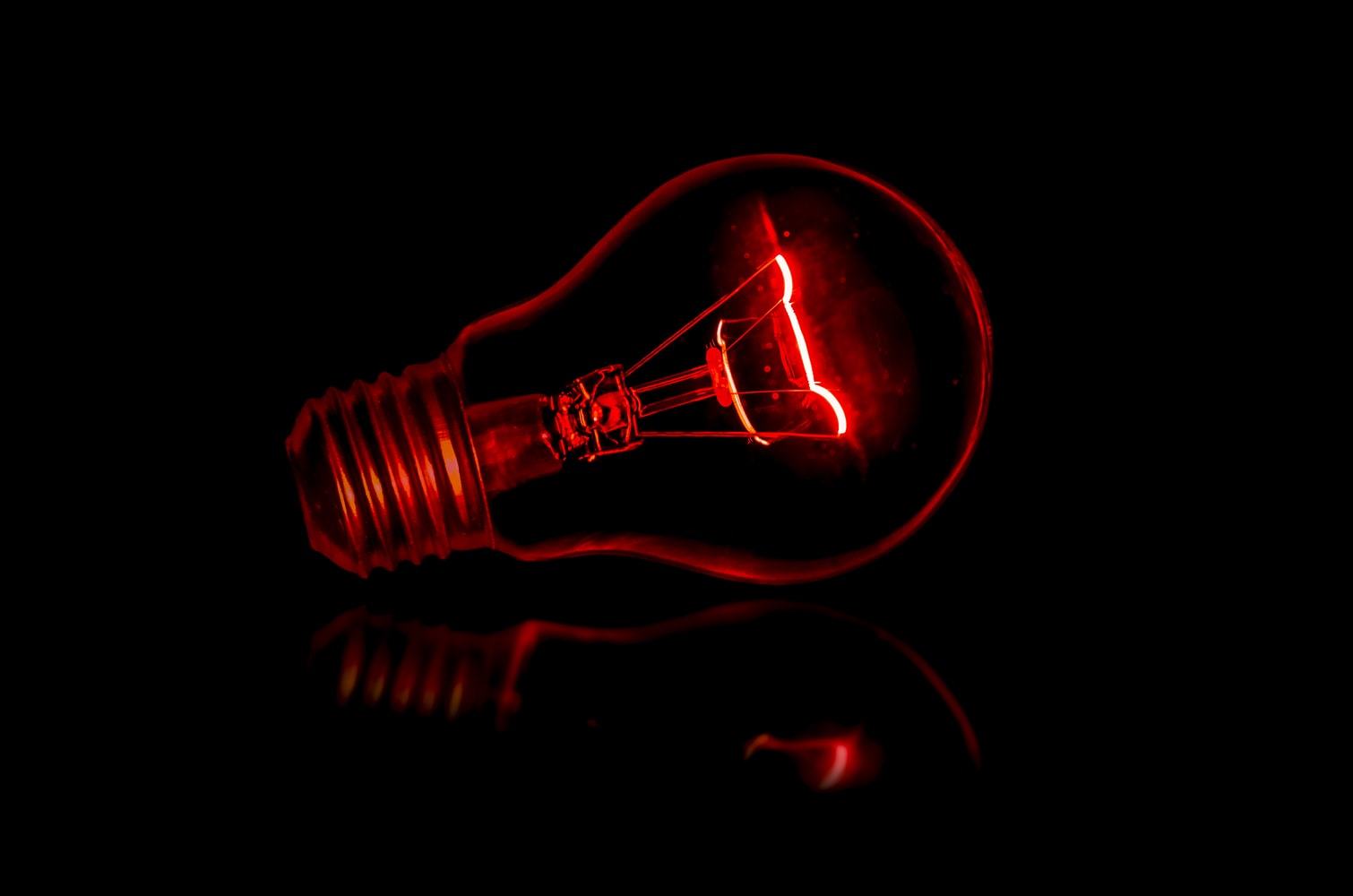
Red Light Therapy
One hormone that has been shown to decrease red light’s efficacy is a user’s level of melatonin [1]. This decrease in effectiveness occurs most prominently in what’s known as the “pharmacological range,” which is the range at which melatonin levels occur unnaturally (such as taking melatonin supplements). Importantly however, cells pre-treated with melatonin in the physiological (natural) range, still showed a decrease in cell adhesion rate, a common indicator of red light’s effectiveness, when compared to a control group with no melatonin treatment at certain dosages of light.
This graph below shows the stark difference of red light treatment with and without melatonin in the pharmacological range. Melatonin’s presence decreases the ability for cells to adhere from 750 nm – 850 nm, with the largest deviation at 820 nm. (Figure 1). While there is a difference present along the entire spectrum, the difference is relatively insignificant outside of the 750 – 850 nm range.
GRAPHICS 1 and 2
Scientists in various circles remain relatively unaware of the significant hindrance melatonin poses to cell adhesion in the near-infrared range. We at oval.bio are currently researching in this area to see if we can determine these specific mechanisms.
Although the study was conducted on in vitro cells, Tiina Karu, the study’s author, asserts that one can extrapolate the study’s results to human patients by taking into account variables such as time of day, melatonin intake, and other factors.
head
What does this study mean in terms of maximizing red lights benefits?
Primarily, it indicates that users should not be taking any melatonin supplements within 6 hours of their treatment for the purpose of falling asleep or increasing melatonin levels, since pharmacological doses of melatonin can significantly decrease RLT’s efficacy in the NIR range. An ideal timeframe of six hours or longer is recommended since melatonin has a half-life of approximately one hour, and the standard guideline for the duration required for drugs to wear off is typically five half-lives.
head
Furthermore, we optimized the wavelengths and dosages of light in our red light panels to illuminate cells with minimal melatonin. As seen in Karu’s study, even natural concentrations of melatonin can affect RLT when applied at the same dosage levels. Thus to decrease melatonin levels, administering RLT during the day is ideal because melatonin levels are naturally lower during this time.
Additionally, because melatonin levels lower as we age, older individuals would be more receptive to red light therapy too. While we can’t control our age, this is an important factor to consider when doing RLT.
GRAPHIC 3
The study also gives us some insight on the ideal candidates for RLT. Those above the age of 40 who use red light during the day will probably experience the most benefits from red light.
That, however, is not to say that younger users can’t reap red light’s benefits,– they certainly can. When looking at how melatonin varies by age and time of day, the baseline of 35 year olds and 70 year olds are almost the same during the day– it is only at night where the large peaks and deviations between age ranges occur.
A
Also, make sure not to take any melatonin supplements within 6 hours of treatment and receive red light treatment during the day to optimize the experience.
head
There are several reasons why melatonin might influence the efficacy of RLT
1. At its core, melatonin is a hormone that regulates one’s circadian rhythm. On a deeper level, however, lower melatonin levels are generally biomarkers, or indicators, of certain disorders.Moreover, melatonin is recognized for its capacity to induce specific physiological effects, such as the detoxification of free radicals [2].
2. We can examine this idea further on the cellular level.
Studies indicate that melatonin plays a crucial role in regulating mitochondrial homeostasis [3]. There are several hypothesized reasons behind this including melatonin’s ability to decrease nitric oxide (NO) generation [3], regulate mitochondrial enzymes [4, 5], or inhibit the mitochondrial permeability transition pore (MPTP) in mitochondria [6]. All of these hypotheses, however, ultimately lead to the same result– an improvement and maintenance of overall cellular functioning.
head
2. Extrapolating further, the previous two bullets of information indicate while lower melatonin levels might naturally cause issues with the body, red light can essentially fill the void of melatonin. In essence, red light therapy can alleviate and reduce the issues induced by a lower melatonin level in the body.
ATP and the mitochondria are important factors in the efficacy of RLT.
In the previous section, we established that the best time to get RLT is during the day, however, also consider when you as a user would like to reap the most benefits. This is a crucial variable to consider, as studies indicate that cells exhibit the most significant effects from RLT 3 to 6 hours after light exposure on the body. Nevertheless, benefits persist up to 24 hours afterward [7, 8].
head
The general consensus from research suggests that the effects of RLT require time to manifest on a macro scale in the body. For instance, in both studies mentioned above, testing the effects of red light at 5 minutes did not yield any noticeable difference; the effects began to emerge after approximately 20 to 25 minutes.
In practice, this information is important as a user in determining when you want to see the benefits of red light therapy. Athletes, for instance, use RLT a few hours before an event. Similarly, if you as a user want to use RLT for muscle recovery after the gym, or for wound healing after a medical procedure, consider doing RLT 3-6 hours before.
Scientific literature has demonstrated that enhancing oxygen levels can enhance the effectiveness of red light therapy. This augmentation of oxygen levels has been explored in studies utilizing hyperbaric oxygen therapy (HBOT) in conjunction with red and near-infrared light. HBOT is employed to temporarily elevate blood oxygen levels.
In several studies, the combination of red light and oxygen provided greater relief in several areas including wound healing (as conducted by NASA) [9] and foot ulcers [10, 11, 12], than red light or hyperbaric oxygen therapy alone, showing the synergy of these two therapies.
What these studies show in practice is that increases in oxygen content in the blood and body can dramatically improve red light therapy’s efficacy.
head
HBOT does not come without its disadvantages and risks, however.
In terms of disadvantages, many in the scientific community characterize HBOT’s methods as not only expensive, but also as generic and untargeted, which could lead to serious side effects [13].
These side effects, most commonly, include barotrauma of the ear, sinus damage, vision loss, and lung seizures [14].
This is why we at oval.bio propose using nanobubbles as a safer, more effective, and better targeted [13] way to deliver oxygen to the user. In addition to immersion, we will be saturating the body by having the user drink with high oxygen content and wearing a mask to breathe in highly oxygenated air. Thus, we will be delivering oxygen via a trifecta of mediums: through the pulmonary, digestive and dermal systems of the body.
The synergistic effect of red light and nano bubble oxygen therapy, we believe, will provide more benefit than either therapy individually, while also being safer than HBOT.
[1] https://drive.google.com/file/d/1tpJZkBRY0yh-Q7bu-vR8BsFtR-EKAAjP/view
[2] https://www.ncbi.nlm.nih.gov/pmc/articles/PMC5405617/
[3] https://www.ncbi.nlm.nih.gov/pmc/articles/PMC5361446/
[4] https://www.pnas.org/content/114/38/E7997
[5] https://pubmed.ncbi.nlm.nih.gov/11854034/
[6] https://www.ncbi.nlm.nih.gov/pmc/articles/PMC5187924/
[7] https://www.ncbi.nlm.nih.gov/pmc/articles/PMC4355185/
[8] https://pubmed.ncbi.nlm.nih.gov/25700769/
[11] https://pubmed.ncbi.nlm.nih.gov/11393266/
[12] https://pubmed.ncbi.nlm.nih.gov/16762777/
[13] https://www.sciencedirect.com/science/article/pii/S1742706120301756

